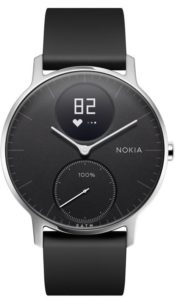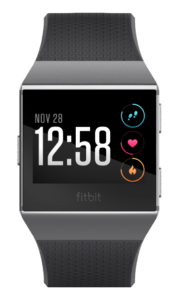
 Fitbit and Nokia recently announced some big moves. Fitbit purchased a patient engagement platform, Twine. Nokia announced that they are getting out of consumer digital health. Both of these are big news and may suggest that 2018 is going to be a rough year for digital health. Read on for what this means for your digital health strategy.
Fitbit and Nokia recently announced some big moves. Fitbit purchased a patient engagement platform, Twine. Nokia announced that they are getting out of consumer digital health. Both of these are big news and may suggest that 2018 is going to be a rough year for digital health. Read on for what this means for your digital health strategy.
Buying into a plan
Both Fitbit and Nokia have tried to buy new growth strategies in digital health.
At the end of 2016, Fitbit announced that it was buying Pebble, an early darling of the smartwatch world. Fitbit, a long-time maker of wrist-based fitness trackers, seemingly wanted to crack the code on smartwatches and grow into a manufacturer of more fully-fledged wrist-based devices. Unfortunately, 2017 didn’t seem like a banner smartwatch year for Fitbit.
Then, a few weeks ago, Fitbit announced it purchased Twine to combine digital health hardware with care management software. This can be a good move (as I will mention below), but smacks of Fitbit once again annually buying a new business model.
As for Nokia, a few years ago it purchased Withings, maker of a range of consumer health devices, and boldly entered the consumer digital health space. But a string of stumbles last year and, it seems, a poor performance in the market soured Nokia, who has now announced they are getting out of digital health.[1]
Tellingly, I had done some research last summer and discovered some gaps in Nokia’s go-to-market strategy that echoed what Fitbit realized, and what I discuss below as a positive way forward for these manufacturers.
But first a comment on 2017 and 2018.
From #proveit to #killit?
By the end of 2016, there were rumblings that the proliferation of digital health solutions (a Cambrian Explosion, perhaps?) were ringing hollow. Too many claims, not enough proof. I, and others, called out for us to make 2017 a year to #proveit, asking folks to back up their claims with real data. Interestingly, 2017 was full of companies releasing data to prove or retract their claims.
But with Nokia and Fitbit making major moves at the start of this year, will we see vendors reconsidering the challenges of digital health and start killing programs in 2018?
Where this is heading
Nokia’s and Fitbit’s moves are indicative of consumer digital health overall, and the challenge of chronic health management solutions, be they devices or software. The device or the software cannot stand alone. The hardware and the software will work better as part of an integrated whole.
Indeed, I claim that one needs to go beyond the device and software, but also consider the humans in the loop. What I saw in my research this summer was that device and software solution vendors failed to take a systems view of where they fit in the grand scheme of things. That left the hospitals and users stuck with the role of integration, something they don’t have the time, skills, or patience for.
Though, sadly, while I believe strongly that better integration of software, hardware, and caregivers is the way forward for digital health, that won’t be enough (sorry).[2] The users and hospitals themselves need to have a strategy and business model that gives value to these integrated solutions for the management of chronic care. And until providers stop focusing on the top line of billing more services, this will be hard to make happen.[3]
What does this mean?
Nokia stepped out of digital health for failing to expand their offering sufficiently beyond separate devices (really, I saw that they didn’t do their homework). Fitbit is flailing for roughly the same reason, but realized they needed to buy the engagement part. The challenge is if Fitbit also can integrate well into the person part. Also, Twine’s move out of ACOs and to employee plans might corner them into a hard-to-win market – employee programs have tried and failed with device vendors already enough.
Should Fitbit extend to include caregivers as part of their solution, and see the role of their engagement platform to integrate other devices and solutions, then perhaps they have a chance. But so long as Fitibt try to focus only on themselves they will struggle. Let’s check again next year at Fitbit’s annual business model purchase.
What this all means is the strongest digital health strategy will be one that takes a systems and multi-vendor view, weaving in devices, assistive software, and caregivers with a business model that providers can understand and like.
For the longest time I’ve been saying that ‘The structure holding the morsels becomes the experience.’
Do your homework and understand how your offering fits in the grand scheme of things. And own it.
So. What’s your strategy?
[1] Nokia say they are still in healthcare, with IoT and network solutions. But that’s not really interesting, is it?[2] Sadly, a few times last year I discovered hospitals that were building promising teams, with hardware and advanced analytical software. Alas, the hospitals then, for different reasons, got tired of the project and killed these projects.
[3] There’s a reason Twine left the ACO space. Though there is no reason to despair and think that business model innovation can’t still happen, despite these challenges and constraints.